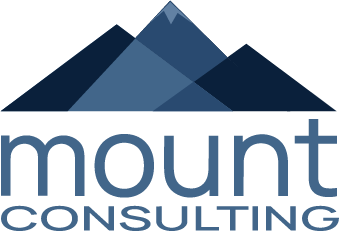ARJAN BOM
EBA discussion paper on integrated reporting
The burden and time consumption that goes into regulatory reporting is probably recognisable for every financial institution. With the advent of the banking union and Basel III, the reporting has taken a flight.
The challenges are plenty with reporting taking place to a plethora of institutions, an ever-increasing quantity of reports and templates to be reported and the technical challenges. Some steps have been taken to alleviate the burden of reporting. An example of this is moving to XBRL from the diversity of reporting languages that were used in all different countries.
The EBA now has taken the initiative to further optimise the reporting value chain by publishing a discussion paper outlining a variety of options to tackle these challenges. The paper attempts to ring-fence these main areas needed for the development of an integrated and consistent reporting system:
- a common data dictionary
- central data collection
- governance
The common data dictionary aims to tackle the current complexity of different dictionaries across different standards where currently prudential, statistical and resolution data are all handled separately. This also makes comparability and reconciliation of the reported data difficult. The paper also touches upon the topic of granularity where three scenarios for collecting data on a more granular basis are identified and assessed.
The central data collection facilitates data sharing between authorities and one-click reporting by financial institutions. The paper explores mainly the technical aspects of central data collection with a range of possible design options from topologies and system architectures. Furthermore, the paper discusses the options for Push and Pull approaches for data collection. The EBA mainly requests input on the implications and costs for these different approaches. The operational implications are discussed much less extensive than the implementation challenges, including technological limitations. The focus is more is on the advantages one-click reporting versus having to deliver different reports to different authorities.
Finally, the paper delivers a broad analysis of governance considerations on integrated reporting. Generic topics include submission of data, access and data-sharing between supervisory authorities. There are large dependencies on the common data dictionary and central data collection as these would dictate the ultimate governance needs and requirements.
The paper also touches upon other European initiatives on data and reporting that are currently underway or operational. Attention is given to the European commission initiatives on Data Strategy and Digital Finance strategy as a foundation. Next to that the supervisory cooperation from the EBA is covered: the EBA and SRB cooperation on integration of prudential and resolution data and the EBA and EIOPA cooperation to align DPM data modelling and standardised approaches.
The last data initiative covered is the ECB action plan on BIRD and IReF.
WHAT DOES THIS MEAN
The measures proposed:
- take stock of your data landscape and requirements
- obtain consistency through a data dictionary
- define an integrated architecture with a central data collection point
- implement a governance organization to safeguard all these measures are elements of a good data practice and should not come as a surprise. In fact, you should have already been working on them for the past years.
Irrespective of whether you already are implementing these measures or not, you can use the ideas and patterns described as inspiration for your own data integration landscape.
However, what the paper will not tell you, is which choices to make and how to implement them. To the EBA, what matters is the result, not so much the structural solution with which it is achieved.
The paper is of course regulation-driven, with a focus on streamlining regulatory reporting, e.g. by participating in initiatives like BIRD. We would urge you not to stop there. Unifying your data integration architecture purely for regulatory purposes does not make sense, as your internal reporting and analysis will depend on largely the same information and not including that data in your implementation will result in the need for reconciliation, rather than using this opportunity to have a reconciliation-by-design through the reuse of data and definitions for all reporting purposes.
It should also not stop at reporting, do not ignore your (ad-hoc) analysis needs and potential for big data science.
We would also advise you to manage and deliver this change through a hybrid project-BaU approach: defining your data integration architecture and governing it, needs to be done independently of project scopes and timelines. However, the implementation of the architecture needs to leverage the projects which will benefit from such an architecture, with these projects providing the priorities for the implementation iterations. Do not start a 3-year data integration project as you are setting yourself up for failure. Ensure that you can tie the success of your architecture to the implementation of already defined targets, with iterations to ensure that quick results can be obtained along the way.
Lastly, set up the governance of your data integration architecture from day one. Think about the team that will manage the central components. Define the processes, manage accountability and responsibility and ensure that you are ready to create a routine which can support large project changes as well as BaU improvements.
HOW CAN WE HELP
At Mount Consulting, we have extensive experience in these types of architecture definitions and implementations for local and international financial institutions. We can help you with the architecture design, the governance definition and the implementation analysis, design and QA. If you are interested in better understanding the services we can offer, or want to exchange thoughts about your challenges, do not hesitate to get in touch with us!
Want to know more?
We like to talk about our business and how we can help you!
